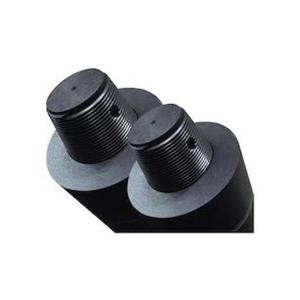3D printing has been a buzzword in the tech world for quite some time now, and for good reason. It’s a game-changer, a revolutionary technology that has the potential to reshape entire industries. But what exactly is it, and how does it relate to graphite electrodes? Let’s dive in and explore this fascinating topic together.
First things first, let’s talk about 3D printing. In simple terms, it’s a process that allows us to create three-dimensional objects from a digital model. It’s like magic, but instead of a wand, we use a 3D printer. These printers can work with a variety of materials, including plastic, metal, and even food. The possibilities are endless, and it’s this versatility that makes 3D printing so exciting.
Now, let’s shift our focus to graphite electrodes. These are crucial components in the steel industry, used in electric arc furnaces for smelting. They’re made from high-quality graphite, which is an excellent conductor of electricity and heat. Graphite electrodes play a vital role in the production of steel, making them indispensable to the industry.
So, how does 3D printing come into play here? Well, it turns out that 3D printing can be used to create graphite electrodes. This might sound surprising, but it’s true. By using 3D printing technology, we can produce graphite electrodes with complex geometries and improved performance characteristics. This is a significant development, as it allows for greater customization and optimization of these critical components.
One of the main advantages of using 3D printing for graphite electrodes is the ability to create intricate designs that would be difficult or impossible to achieve with traditional manufacturing methods. This opens up a whole new world of possibilities for the steel industry, as it can now produce electrodes that are better suited to specific applications and conditions.
Another benefit is the potential for reduced production costs. 3D printing can streamline the manufacturing process, reducing the need for multiple steps and machinery. This can lead to significant cost savings, which is always a welcome development in any industry.
But it’s not just about the cost savings and design flexibility. 3D printed graphite electrodes can also offer improved performance. By controlling the microstructure of the graphite during the printing process, we can create electrodes with enhanced electrical and thermal conductivity. This can result in more efficient smelting processes and reduced energy consumption, which is great news for both the environment and the bottom line.
Now, you might be wondering about the current state of this technology. While 3D printed graphite electrodes are still in the early stages of development, there have been some promising advancements. Researchers and industry professionals are working tirelessly to refine the process and make it more viable for widespread use.
One of the challenges that needs to be addressed is the scalability of 3D printing for graphite electrodes. Currently, the technology is limited in terms of the size of the electrodes it can produce. However, as the technology advances, we can expect to see larger and more complex electrodes being created using this method.
Another challenge is ensuring the quality and durability of the 3D printed electrodes. As with any new technology, there are concerns about the long-term performance and reliability of 3D printed components. Extensive testing and research are being conducted to address these concerns and ensure that 3D printed graphite electrodes can meet the rigorous demands of the steel industry.
Despite these challenges, the future looks bright for 3D printed graphite electrodes. As the technology matures and becomes more widely adopted, we can expect to see significant changes in the way graphite electrodes are produced and used. This could lead to a more efficient and sustainable steel industry, which is something we can all get behind.
In conclusion, 3D printing is a powerful and versatile technology that has the potential to transform the production of graphite electrodes. By offering design flexibility, cost savings, and improved performance, it opens up a world of possibilities for the steel industry. While there are still challenges to overcome, the future of 3D printed graphite electrodes is promising, and it’s an exciting time to be a part of this technological revolution.

